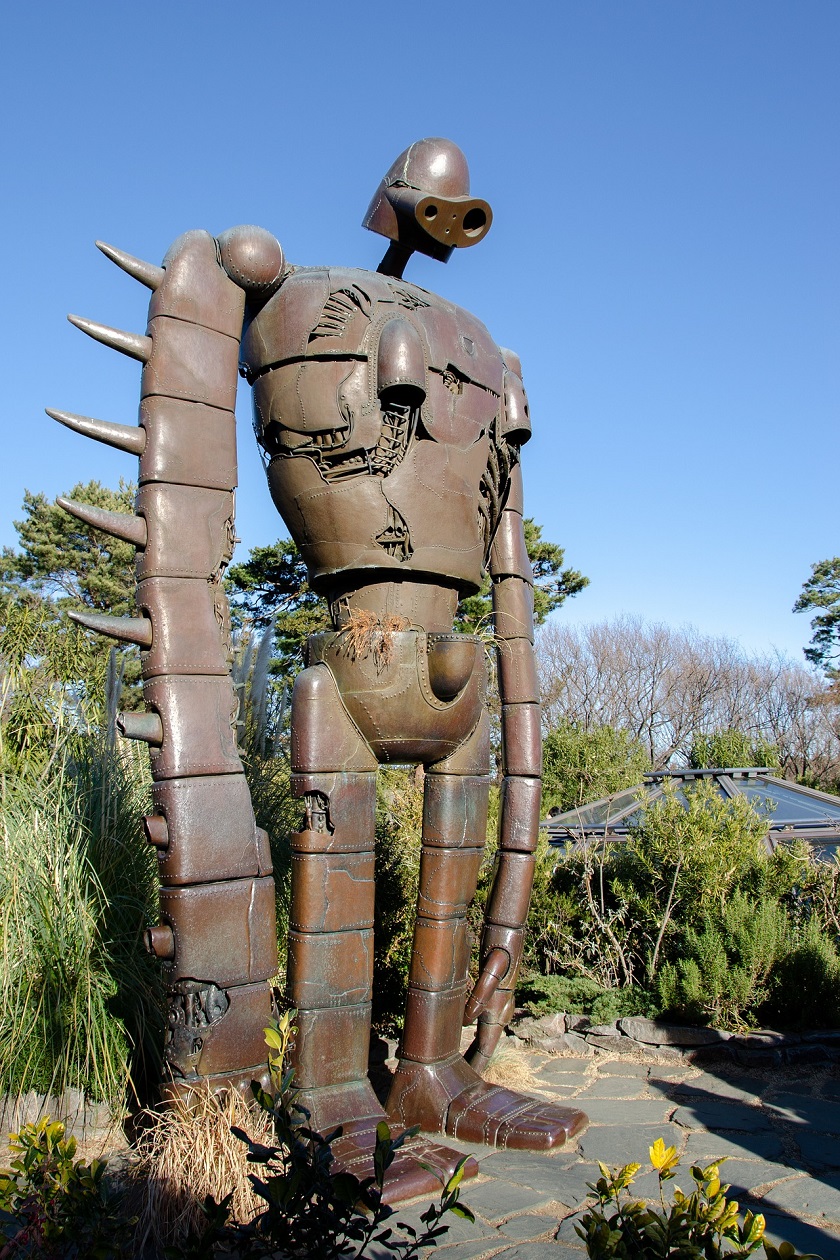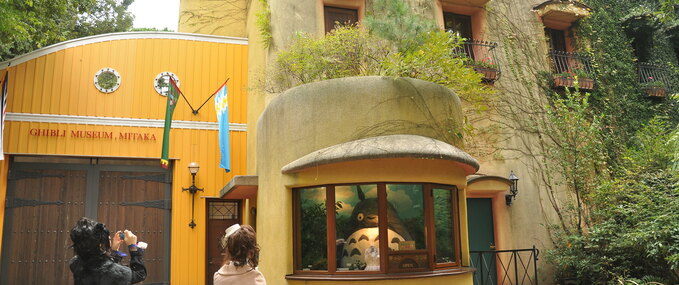Table of contents:
When tourists walk along the Kichijoji Avenue in Mitaka Inokashira Park they are soon welcomed by the Ghibli Museum; an ivy-covered, colorful building with a unique structure and a large Totoro greeting every visitor at the entrance.
If you’re a fan of Japanese anime culture, no tour through Japan would be complete without a trip to the Ghibli Museum.

Getting to Know the Ghibli Museum
Located in Mitaka, Japan, the museum opened in 2001 and quickly became an integral part of any anime tour through Japan.
Characteristics of the building’s design — such as the maze of spiral staircases, bridged passages, and overhanging terraces — often reflect storyboards of Hayao Miyazaki’s films. Widely considered “Japan’s Walt Disney” by westerners, Miyazaki is Ghibli Museum’s director and designer as well. The museum’s storybook-like world exhibits an uplifting experience that will leave all who enter with an enriched feeling that may not have been there when they first entered.
What It’s Like in the Museum

The unique exterior of the museum is a sneak peek into what the interior holds. When visitors first walk in they are greeted with a fresco painted ceiling depicting a blue sky and a smiling sun in the center, surrounded by trees, grapes, melons, flower blossoms and — if they look close — the visitors can see well known-anime characters flying through the sky. This is where the tickets, made of pieces of a 35 mm film that were used in theaters, are given to the visitors in exchange for reservation coupons.
The ceiling of wonder is just the beginning; the rest of the museum is made up of permanent exhibits that maintain the storybook world throughout.
- A Boy’s Room: One of five rooms on the first floor is the room “Where a Film is Born.” This workspace style room is set up as if someone was just sketching at their desk. The rest of the room is filled with books and toys and walls covered with illustrations and sketches. The room is intended to give its viewers a look into the world of an animated film-maker.
- Central Hall: An open space within the museum with a glass dome in its center. The visitors will also experience some of the many bridges and spiral staircases that are seen throughout the museum. This space is just one of the examples of how Miyazaki incorporated his strange building structure from his films.
- Cat Bus: The Cat Bus room on the second floor was created after the Cat Bus seen in Miyazaki’s animated film “My Neighbor Totoro.” Next to the bus visitors will find an array of soot-black Dust Bunnies that are waiting to be played with. It was supposed to be as big as it was in the film, but unfortunately, it wouldn’t fit, so it had to be downsized. This room is for children ages 12 and under.
- Mamma Aiuto: Located at the top of the museum, visitors will find the souvenir gift shop named after the band of sky pirates in Miyazaki’s animated film “Porco Rosso.”
- Rooftop Garden: Off of the terrace in the Cat Bus room visitors will find a spiral staircase that leads to the roof where they will then be greeted with a grassy rooftop garden. Aside from the vegetation, they will also encounter a 5-meter tall Robot Soldier that is seen as the Guardian of the Ghibli Museum.
- Saturn Theater: Located in the basement of the museum is the Saturn Theater. This quaint theater seats 80 visitors and they can watch a Ghibli original short animated film that can only be seen at this theater.
- Straw Hat Cafe: This is Ghibli’s only sit-down restaurant that serves both hot and cold foods, snacks and desserts. The simple menu may have a limited variety, but almost all of the ingredients come from organic farms.
- Tri Hawks Reading Room: Named after the museum’s location, Mi-Taka, or “3 hawks,” the reading room was created to communicate the museum’s goal of having the children that visit experience everything there is to experience about books.
The History of the Studio Ghibli
The history of the Studio Ghibli starts with Japanese animator and museum creator Hayao Miyazaki. Miyazaki has created some of the most world-renowned, impactful animated films like “My Neighbor Totoro,” “Spirited Away,” and “The Wind Rises.” Disney noticed Miyazaki’s success and teamed up with him, acquiring his production house Studio Ghibli.
One of the many alluring aspects of Hayao Miyazaki is that, unlike many directors, he is an artist and is actively involved in each step of the animation process from start to finish.
Getting Studio Ghibli Museum Tickets
All Ghibli Museum tickets are available by advance reservation only, meaning that no reservation or ticket purchases can be made at the museum. Options to purchase the tickets are offered by 2 different groups:
- JTB Group Overseas: Tickets will go on sale on the first day of every month for entry to the museum three months later. For example, tickets for September go on sale June 1st, and they’re only good for that specific date.
- LAWSON TICKET: Tickets go on sale on the 10th of every month for admission the following month. For example, tickets for July go on sale June 10th, and are only good for that specific date.
If the visitor is purchasing tickets to the Ghibli museum outside of Japan, charges will be calculated based on their local currency at the current rate of exchange and will include a handling fee.
The museum is closed every Tuesday with limited exceptions, and closes at Year-end and for New Year’s Holidays (December 27, 2019 – January 2, 2020) and periodic maintenance (November 4, 2019 – November 15,2019).
Travelling to the Museum
The Ghibli Museum is located at:
1 Chrome-1-83 Shimorenjaku,
Mitaka, Tokyo 181-0013, Japan
If visitors are traveling by train:
To find the Ghibli Museum by rail, take the JR Chuo Line from Shinjuku Station to Mitaka Station. From the south exit of JR Mitaka Station, it’s a 15-minute walk to the museum.
A community bus runs from JR Mitaka Station to the museum. Travelers can purchase bus tickets at the vending machine by bus stop No. 9.
Photo credit:
Banner image by Lucius Kwok under CC CC BY-SA 2.0 license.

.png)


.jpg)
